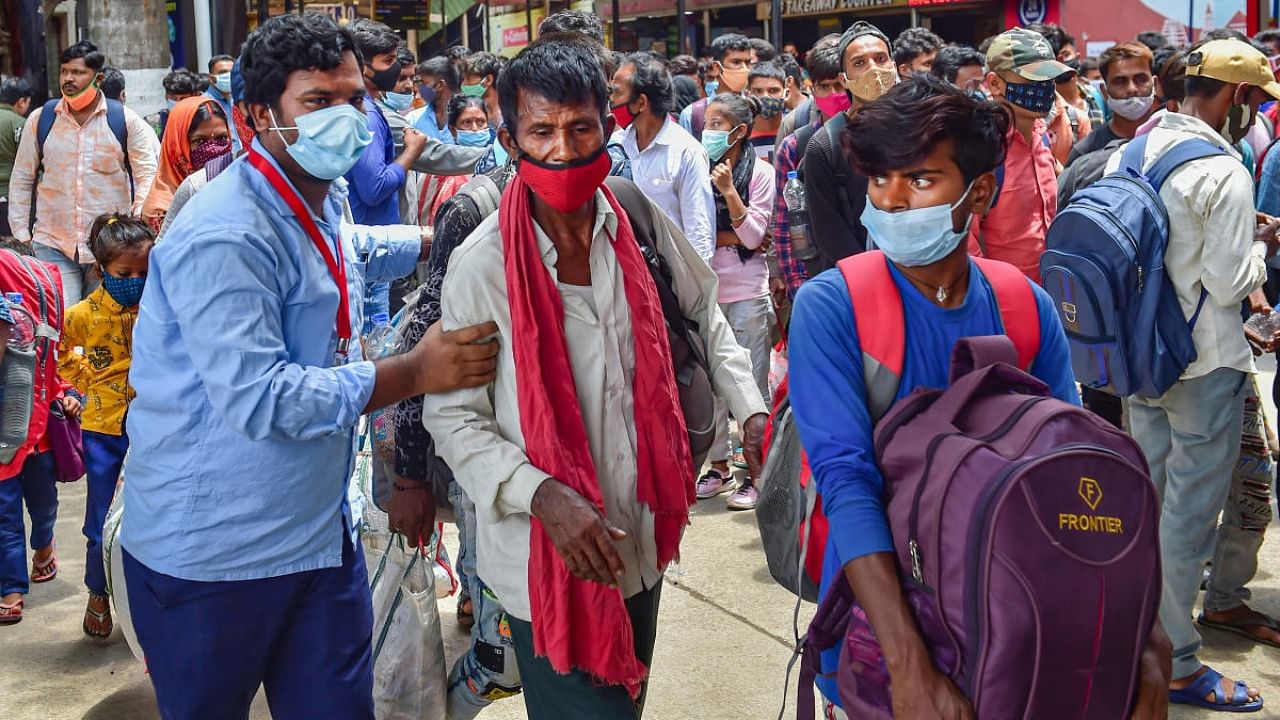
Karnataka was far from attaining natural immunity against the Covid-19 in January this year, and hence must step up vaccination coverage and enforce public health measures to prevent the spread of Covid-19, concluded the second serosurvey done in January this year, the results of which were finally published eight months later in Bengaluru on Wednesday.
The study found antibodies in 15.6% of the population and active Covid infection in just 0.5%. Statewide infection fatality rate (IFR) was estimated as 0.11%, and Covid-19 burden estimated between 26.1 to 37.7%.
Epidemiologist and State Covid-19 Technical Advisory Committee (TAC) member Dr Giridhar Babu tweeted, "The study found lower levels of IgG seroprevalence (antibodies), mostly due to antibody waning. We found near zero prevalence of active cases during mid-February 2021. Karnataka was far from attaining population levels of immunity during the survey."
The results of the second round of serosurvey were used in late March by the State health department to update testing and surveillance strategies. The results were finally published on medRxiv, a preprint server, on August 11. The second serosurvey started on January 25 this year, to estimate the burden of active infection and anti-SARS-CoV-2 IgG antibodies in the general population of Karnataka.
Additionally, a study among participants identified as Covid-19 positive in the first survey round was conducted to assess the clinical sensitivity of the testing kit used. The study of 41,228 participants across 290 healthcare facilities in all 30 districts of Karnataka was done among three groups of participants (low, moderate, and high risk).
Consenting participants were subjected to RT-PCR testing and antibody (IgG) testing. Clinical sensitivity of the IgG ELISA test kit was estimated as equal or more than 38.9%. The sentinel based population survey helped identify districts that needed better testing, reporting, and clinical management.
Babu further added, "There was a subsequent surge seen in Karnataka due to a mix of alpha, and delta (variants) which was picking up speed in April, and a large susceptible population were infected."
"The results from such surveys are useful for prioritising areas that need to step up vaccination coverage and enforce public health measures to prevent the spread of Covid-19. Analysis at district level can identify priority areas needing actions," he said.
"Not every area will have the same risk. Battle against multiple waves has to be fought by using data from seroprevalence and vaccination coverage. Areas with lower vaccination coverage and lower seroprevalence will be the worst hit and need to be prioritised for saving lives," Babu said.
Neurovirologist Dr V Ravi, state nodal officer for genetic confirmation of SARS-CoV-2 virus, told DH, "One should remember that this survey was done when the first wave ebbed. The people who participated in the second round were those who didn't participate in the first round (in September last year). So, these infections are in addition to what we found in the first survey. The right interpretation is to add both results that gives us 42.9% (27.3% prevalence found from first serosurvey + 15.6% from second survey)."
Ravi explained considering that until January only 43% were exposed, this explains why we had a huge second wave because more than half of our population was not exposed.
"We need to do at least 1.2 lakh vaccinations per day and sustain high levels of testing. These are actionable takeaways for the government to implement. Now, we're waiting for the government clearance to do the third survey. This time the added variable will be the vaccination status of the participants and if it has any effect on the disease burden," he said.
He pointed out that since the gap between the first and the second rounds of serosurveys was more than three months, hence antibodies waned.
"This is why we called back participants from the first survey and took samples from them, and found that more than half of them did not have antibodies," he added.
